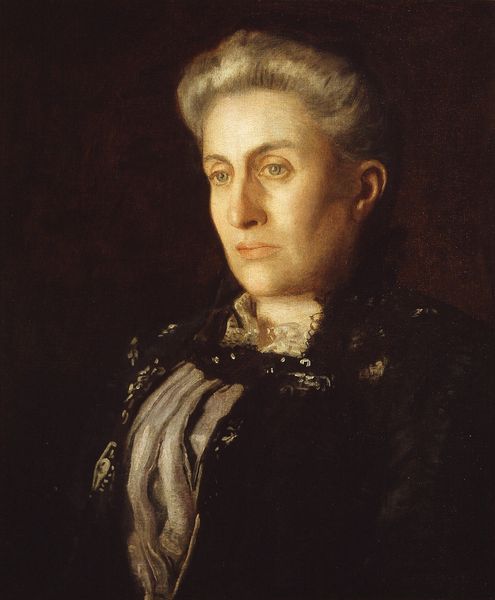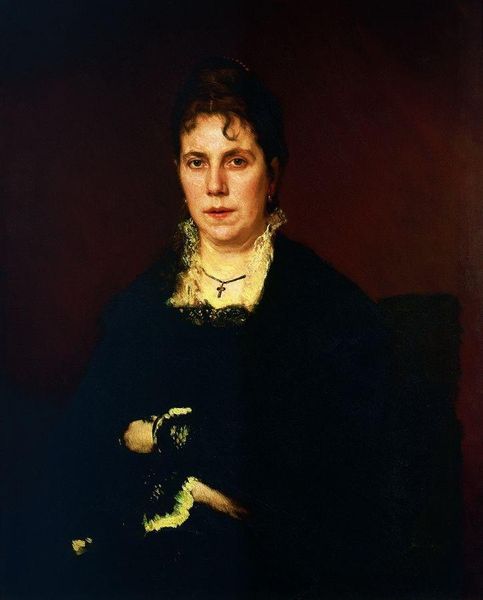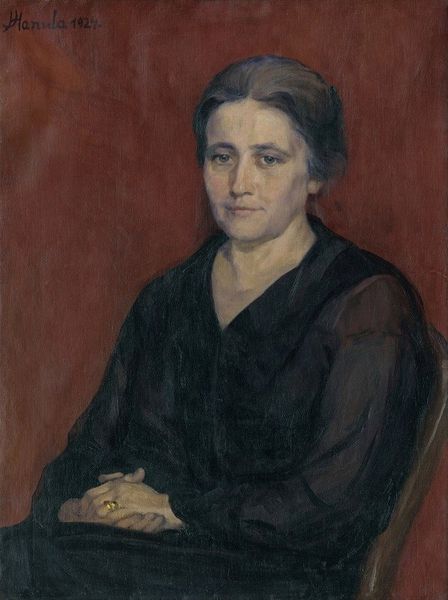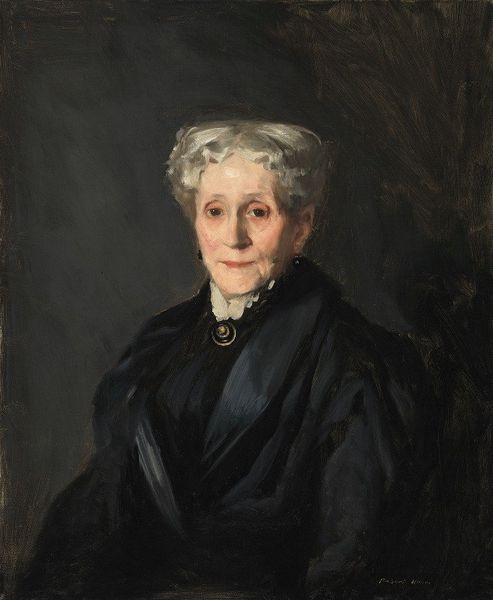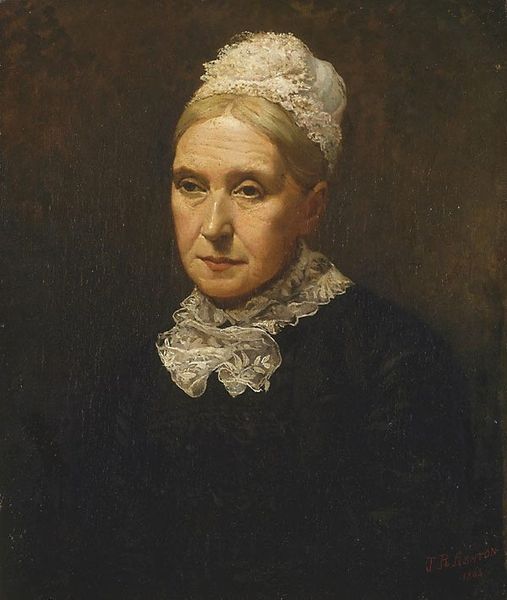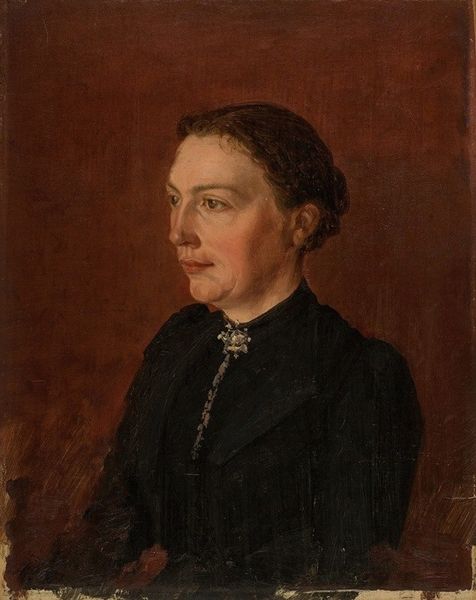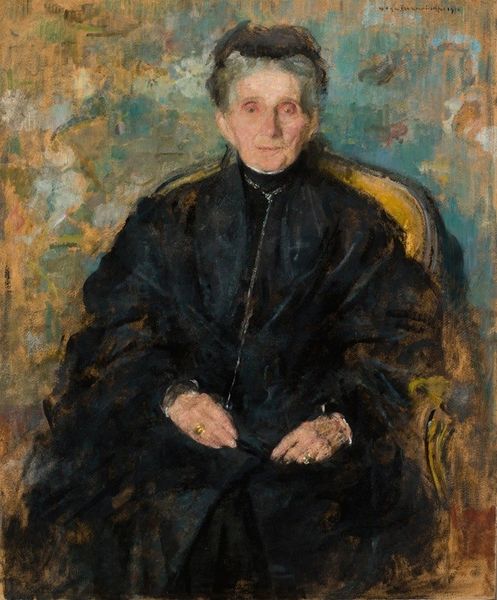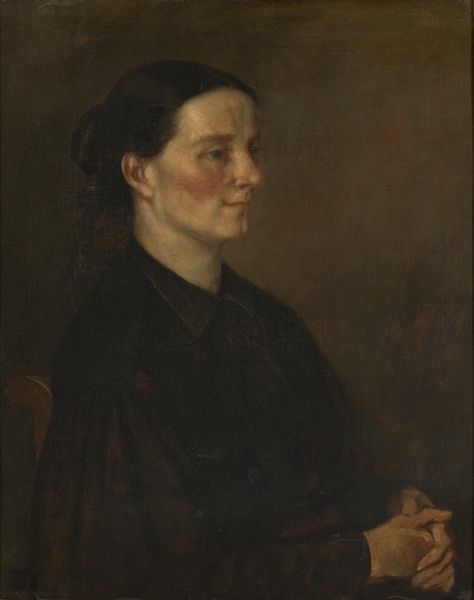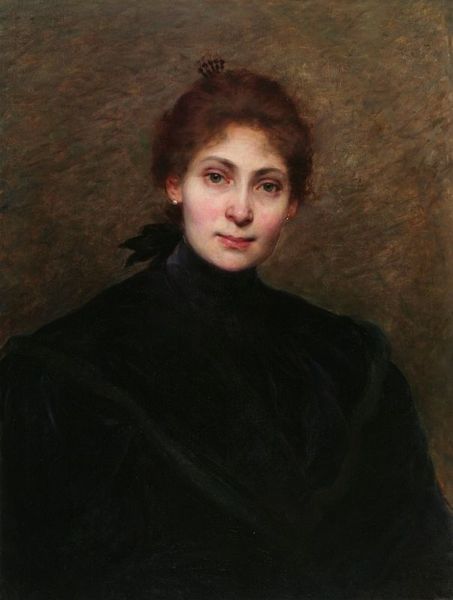
painting, oil-paint
#
portrait
#
portrait
#
painting
#
oil-paint
#
academic-art
#
modernism
#
realism
Copyright: Public domain
Curator: Standing before us is Thomas Eakins’ “Portrait of a Woman,” painted around 1900. It is an oil painting and currently resides in a private collection. Editor: It's a somber piece. The limited color palette and the subject's direct gaze evoke a sense of introspection, even melancholia. The dark tones are nearly overwhelming. Curator: Eakins was fascinated by realism and portraying his subjects with honesty. In this portrait, notice how he captures the woman's age, the lines on her face. It's about portraying the human condition. Her face is, effectively, the only illuminated part. Editor: The gaze holds so much. Her calm but unsmiling face and piercing eyes project dignity. How do you see this connecting with the societal perception of women at the turn of the century? Curator: Portraits like this allowed Eakins to examine middle-class social identities. Although she isn’t royalty or celebrity, she possesses a quiet sense of worth. And this aligns with his dedication to portraying real people, regardless of social standing. She could represent any member of a progressive-minded reading circle or club dedicated to the education of women. Her elaborate brooch gives the woman individuality, hinting to some cultural commitment. Editor: The subtle textures, the almost imperceptible folds of her garment and face—do these choices signal that this was a commissioned work or rather an individual expression for the artist? Curator: Eakins produced many commissioned portraits, but even then, his focus remained on authenticity rather than idealization. It’s fascinating how Eakins balances his own artistic intentions with the expectations of patronage. His unflinching honesty sometimes stirred controversy, particularly around representing the human body, challenging prevailing attitudes towards art and propriety. Editor: The artist creates something almost like an icon, someone elevated. Yet it's the plainness that truly draws the attention. It invites reflection not on her social status, but on our shared experience of aging, endurance, and individual experience. Curator: The painting indeed offers such layered perspectives. His subject, a person both familiar and enigmatic, draws us into conversations about humanity. Editor: It pushes one to acknowledge that, within what might seem a typical portrait, resides profound insight on individual character.
Comments
No comments
Be the first to comment and join the conversation on the ultimate creative platform.
